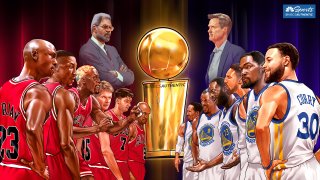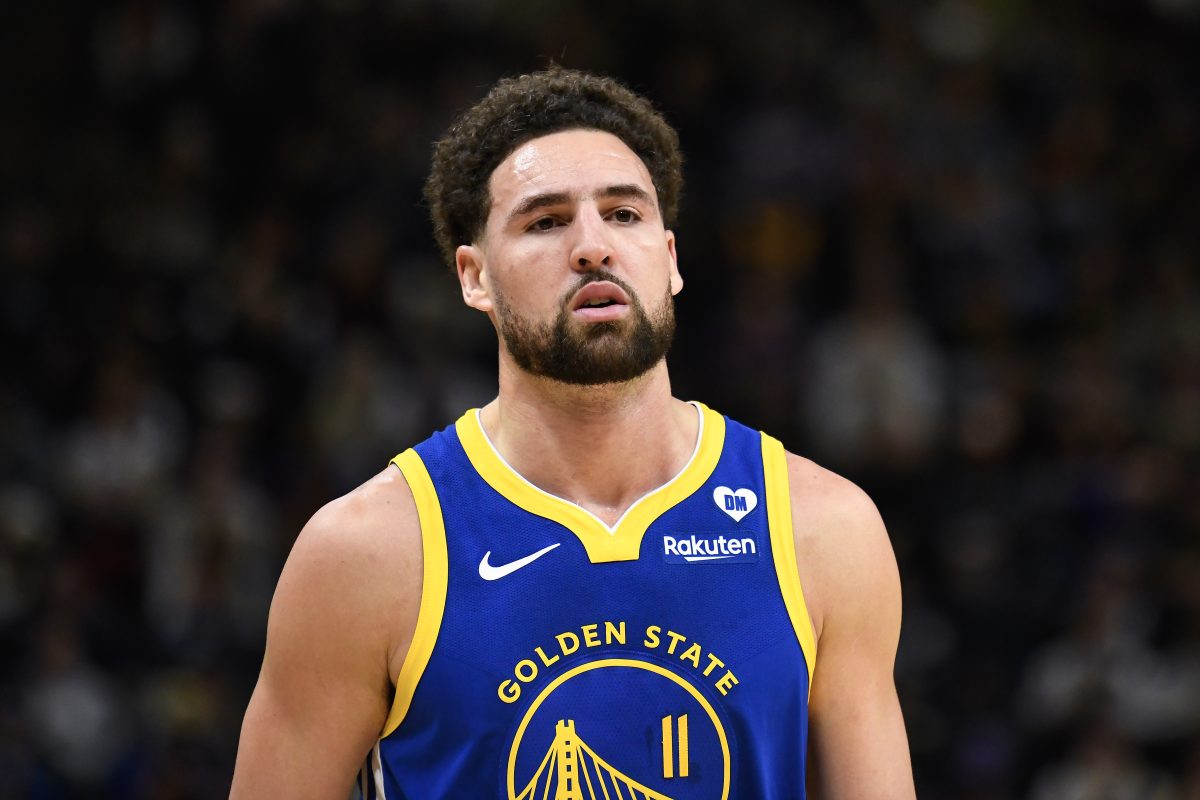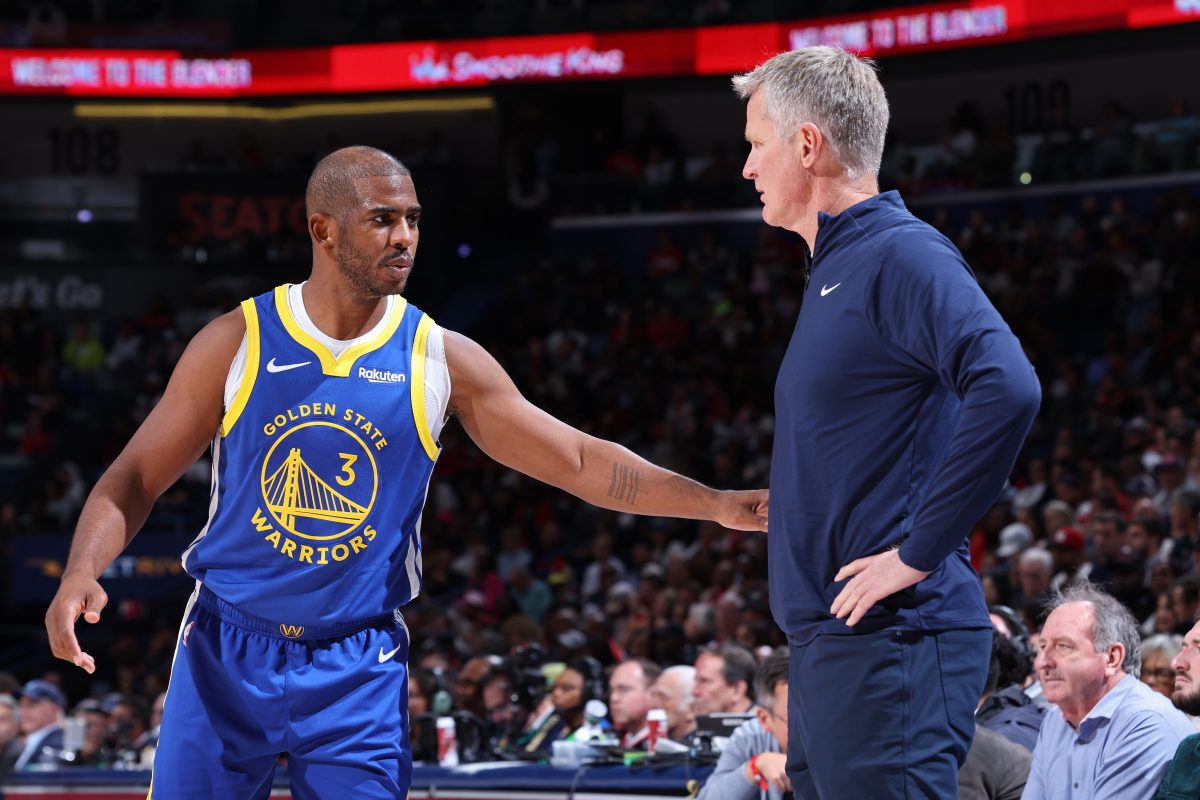
Editor's Note: Over the next week, NBC Sports Bay Area and NBC Sports Chicago will try to settle the debate about who is the best NBA team of all time: the 2016-17 Warriors or the 1995-96 Bulls. Check out NBCSportsChicago.com for the Bulls perspective.
The search for the top two NBA teams over the past quarter century sends us to the 1995-96 Chicago Bulls and the 2016-17 Golden State Warriors.
The Bulls, led by Michael Jordan, Scottie Pippen, Dennis Rodman and coach Phil Jackson.
Stay in the game with the latest updates on your beloved Bay Area and California sports teams! Sign up here for our All Access Daily newsletter.
The Warriors, led by Stephen Curry, Kevin Durant, Draymond Green, Klay Thompson and coach Steve Kerr.
Which was the better squad? The numbers nudge us toward the Warriors defeating the Bulls in a mythical NBA Finals between the teams.
Why? How? Well, four distinct reasons.
One: The star imbalance
Golden State Warriors
The Warriors started four All-Stars, the Bulls two. Though Rodman was a two-time All-Star, neither appearance was as a member of the Bulls and the last came in 1992.
The Warriors All-Stars – Curry, Durant, Green and Thompson – equal the total the Bulls faced while going 11-1 in the first three rounds of the Eastern Conference playoffs. Two of the four – Shaquille O’Neal and Penny Hardaway both, 24 years old – were NBA toddlers.
Though Jordan and Pippen were superb defenders. No question. But that’s only two players. They’d have to chase Curry (presumably Jordan) and Thompson (Pippen) all over town when the games were in Chicago and then repeat this endurance test when the series shifted to the Bay.
Those defensive assignments are a bit more challenging than coping in The Finals with the Sonics duo of Gary Payton and Hersey Hawkins. Payton and Hawkins combined to average 34.9 points per game, Curry and Thompson were at 47.6.
Listen and subscribe to the Runnin' Plays Podcast:
Two: The Durant dilemma
Pippen is the best option to defend KD, and the Warriors would love it because that would force post-knee surgery Ron Harper, age 32, onto Thompson. Don’t think Phil would do that.
Jordan, being the big-money performer that he is, might beg for the challenge of defending Durant. Who, then, would take Steph? Steve, the gritty backup guard? Good luck with that.
Rodman was known to volunteer for tough assignments, so maybe he’d want a piece of KD. By 1996, though, Rodman was 34 and used his energy going after rebounds. His once-excellent defense was ordinary. Durant would torture him.
If Phil decides to play it straight, small forward vs. small forward. KD’s eyes would light up at the sight of 6-10 Toni Kukoc in a defensive stance. Grilled cheese all night.
[RELATED: Seven reasons MJ's Bulls beat 2017 Warriors]
Three: Depth kills
Chicago needed everything it got from Jordan and Pippen, as well as the rebounding fool that Rodman was, to finish the Sonics in six. They all had to crush it for the Bulls to have a chance.
That’s because the bench was so thin. Aside from Kerr, there were totem poles Bill Wennington and Dickey Simpkins, before falling off to Jud Buechler and Randy Brown. Kerr was the only full-time reserve Phil trusted enough to play more than 10 minutes per game that postseason.
The Warriors were turning to Andre Iguodala, David West, Shaun Livingston, JaVale McGee, Matt Barnes, Ian Clark and Patrick McCaw. Ten Warriors averaged at least 12 minutes per game in the postseason. Could any one of them be locked down by anyone off the Chicago bench?
And when Kerr, the coach, goes to his trump card – the Death Lineup – it would take about 90 seconds for Jordan and Pippen to start yelling at their teammates for their glaring failures in transition defense. Meanwhile, Phil is sitting on the bench, legs crossed, without answers.
[RELATED: Warriors strived for Bulls' greatness]
Four: The 3-ball
Shooting 40.3 percent from beyond the arc that postseason, Jordan was the only member of the Chicago rotation to shoot above 33 percent from distance. Kerr shot 32.1 percent, Harper 31.9, Pippen 28.6 and Kukoc 19.1.
In an 18-game postseason, the Bulls totaled 111 triples, shooting 32.7 percent. They averaged 93.0 points per game in the six-game Finals against Seattle.
In a 17-game postseason, Curry and Thompson combined for 113 triples, shooting 40.6 percent.
Durant made 38, shooting a team-best 44.2 percent. Green made 32, shooting 41.0 percent. Clark was at 36.1 percent, McCaw 34.8. Only Iguodala and Barnes shot lower than 33 percent.
[RELATED: Kerr reveals favorite Jordan story]
The Warriors dropped 216 3-balls on Cleveland, shooting 38.6 percent. They averaged 119.8 points per game in the five-game Finals.
We understand, NBA basketball was much different in 1996 than it was 21 years later, and there is no better elucidation than the 3-ball. It went from being part of the game to the core of it. The Bulls simply would not be able to pile up as many points as the Warriors.
With Chicago’s homecourt advantage due to its 72-10 record (the ’17 Warriors were 67-15), it’s Warriors in seven under the old 2-3-2 format and in six under the current 2-2-1-1-1 format.


